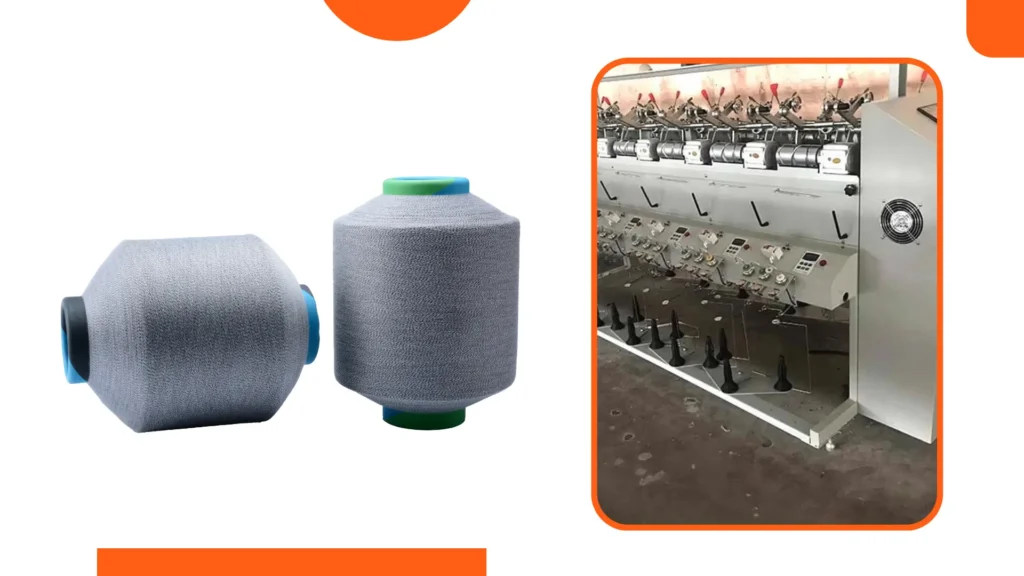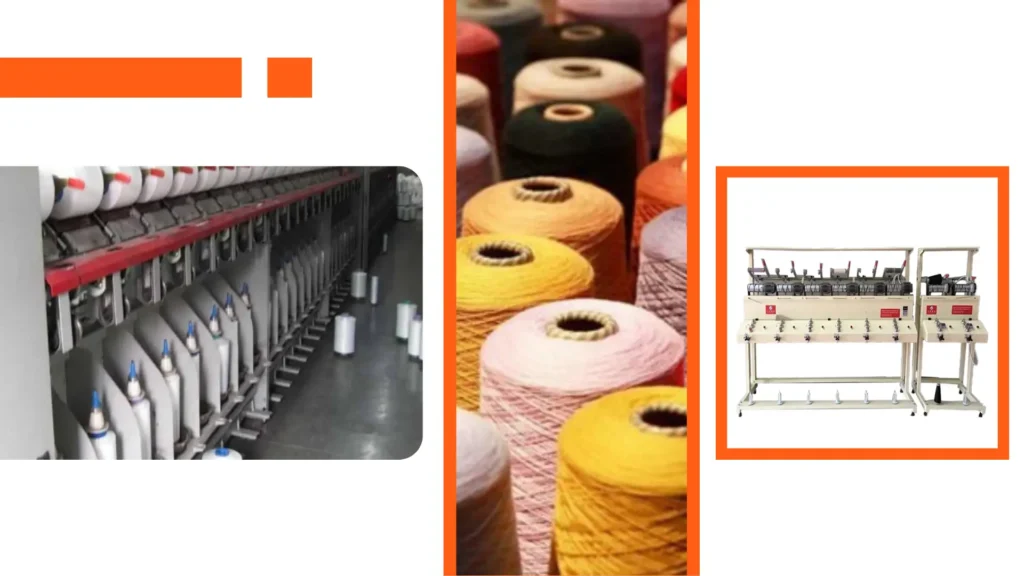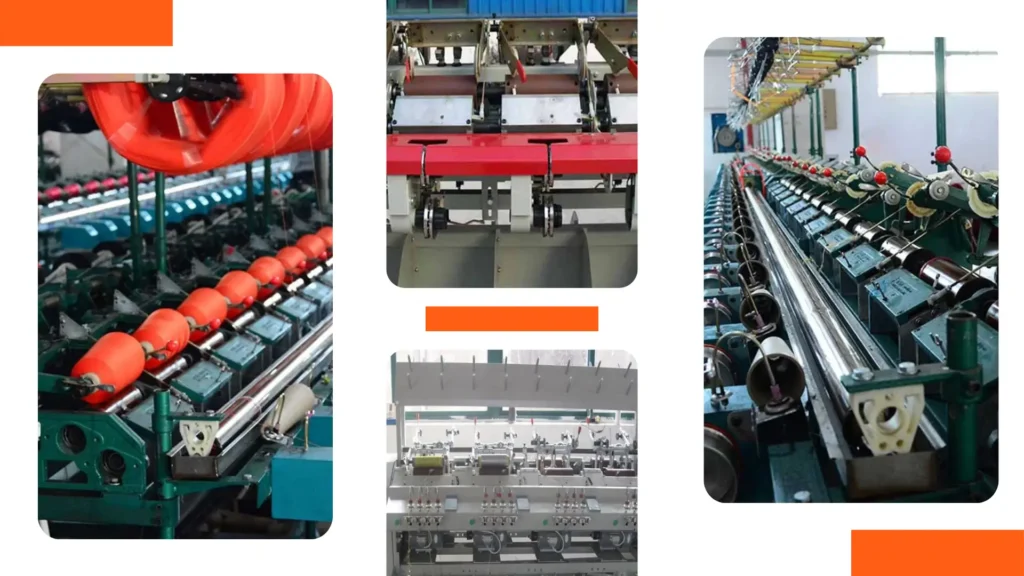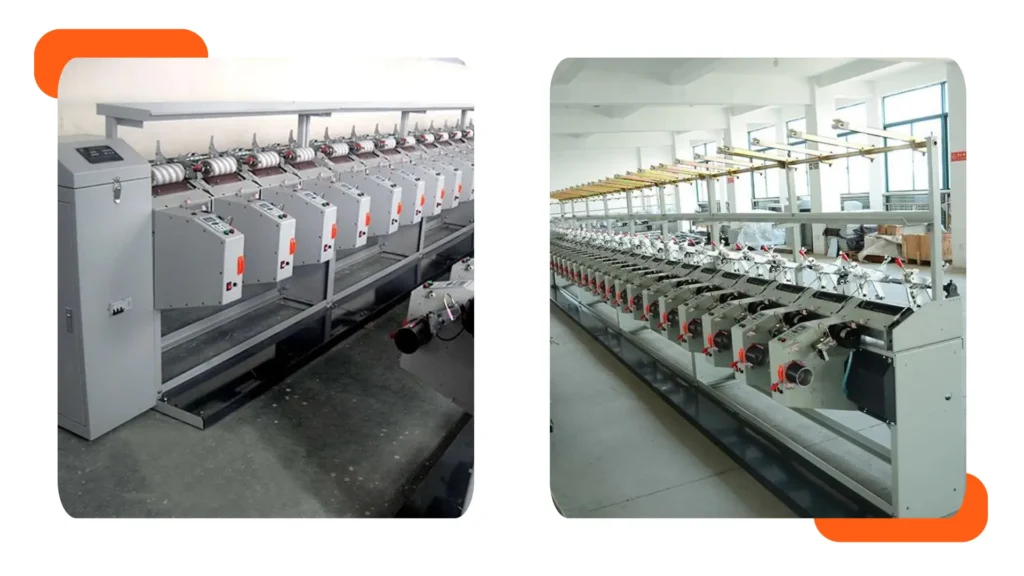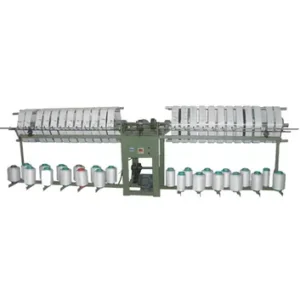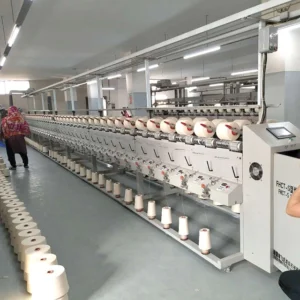In today’s world, the textile industry faces increasing scrutiny over its environmental impact, particularly concerning carbon emissions.
With growing demands for sustainability, automation has emerged as a pivotal solution for reducing these emissions in textile factories.
This article explores how automation technology can streamline operations, enhance efficiency, and ultimately contribute to lower carbon emissions in the textile sector.
How Does Automation Help Reduce Carbon Emissions?
Energy Efficiency Improvements
Automated textile machinery is designed to consume energy only when actively processing materials, unlike traditional machines that often run continuously.
Advanced control systems regulate power usage based on real-time demand, significantly reducing electricity waste.
For example, automated dyeing machines use precise water and chemical measurements, lowering energy-intensive heating processes.
Furthermore, renewable energy sources, such as solar-powered automated units, are increasingly being integrated into factories, further cutting carbon emissions. These innovations make textile production both economically and environmentally sustainable.
Streamlining Production Processes
Automation enhances production efficiency by minimizing material waste and optimizing workflow.
Computer-controlled cutting machines maximize fabric utilization, reducing scrap generation.
Robotic sewing systems ensure consistent stitch quality, decreasing defective products that would otherwise contribute to waste.
Automated inventory systems track raw materials in real-time, preventing overproduction and excess stock.
By refining these processes, manufacturers not only save costs but also reduce their ecological footprint, supporting a circular economy in the textile industry.
Reducing Transportation Emissions
IoT and AI-driven supply chain automation help reduce transportation-related emissions by optimizing delivery routes and inventory distribution.
Smart logistics systems analyze traffic, weather, and demand patterns to determine the most fuel-efficient shipping methods.
Automated warehouses reduce the need for long-distance material transfers by storing goods strategically.
Additionally, localized automated micro-factories are emerging, producing garments closer to consumers and cutting down on long-haul freight emissions.
These advancements make the textile industry more sustainable while maintaining fast delivery times.
Also Read:
- Ways to Achieve Carbon Neutrality in the Textile Industry
- How Can Textile Factories Reduce Their Carbon Footprint?
- How to Conduct a Carbon Footprint Audit for Textile Factories
What Are the Benefits of Automation Beyond Carbon Reduction?
Cost Savings
Automation leads to substantial cost savings by reducing labor expenses, material waste, and energy usage.
Precision machinery minimizes fabric waste during cutting, while automated quality control reduces defects and rework costs.
Energy-efficient systems lower utility bills by optimizing power consumption. Over time, these savings offset the initial investment in automation technology.
Companies can reinvest these funds into further innovations, such as renewable energy integration, creating a cycle of continuous improvement and long-term financial benefits.
Improved Product Quality
Automation enhances product quality by ensuring uniformity and precision in every manufacturing step. Computer-controlled machines eliminate human errors in stitching, dyeing, and pattern alignment, resulting in fewer defects.
Automated inspection systems use AI and high-resolution cameras to detect flaws early, preventing wasted materials on faulty products.
Higher-quality textiles lead to greater customer satisfaction and fewer returns, reducing the environmental impact of excess production and disposal.
This reliability strengthens brand reputation while supporting sustainable consumption.
What Challenges Do Textile Factories Face When Implementing Automation?
Training Employees
Successful automation adoption requires upskilling workers to operate and maintain advanced machinery.
Training programs must cover machine operation, troubleshooting, and data analysis for IoT systems. Some manufacturers partner with technical schools to develop specialized courses.
Investing in employee education fosters a tech-savvy workforce, reduces resistance to change, and ensures smooth operations.
Well-trained staff can maximize automation’s efficiency gains, further reducing energy waste and production delays.
Resistance to Change
Workers may fear job displacement or struggle to adapt to new automated processes.
To address this, companies should communicate automation’s role in augmenting—not replacing—human labor. Emphasizing how automation eliminates repetitive, hazardous tasks can improve employee buy-in.
Reskilling programs can transition workers into higher-value roles, such as machine supervision or quality control.
A transparent, inclusive approach ensures a smoother transition and maintains morale while advancing sustainability goals.
How Can Textile Factories Measure the Impact of Automation on Carbon Emissions?
Establishing Baseline Emission Levels
Creating an accurate emissions baseline requires monitoring all direct and indirect carbon sources for at least one full production cycle.
This includes measuring energy use per machine, transportation logistics, and even employee commuting patterns.
Factories should document current waste generation rates, water consumption, and chemical usage in dyeing processes. Third-party verification can enhance data credibility.
This comprehensive approach ensures the baseline reflects true operational impacts and provides meaningful metrics for future automation improvements.
Modern factories often use IoT sensors throughout facilities to gather this initial data continuously.
Regular Emission Audits
Post-automation, factories should conduct quarterly emissions audits using the same methodology as baseline measurements.
These audits track progress toward sustainability targets and identify underperforming systems. Advanced facilities employ real-time monitoring dashboards that display emissions data alongside production metrics.
Regular audits also help qualify for environmental certifications like ISO 14001, which can provide market advantages.
Some progressive manufacturers are adopting blockchain technology to create immutable audit trails, increasing transparency for eco-conscious buyers and investors.
Utilizing Software Tools
Specialized carbon accounting software like SAP Sustainability Footprint Management provides automated data collection and analysis.
These tools integrate with factory equipment to track energy consumption patterns and calculate equivalent carbon emissions. Machine learning algorithms can identify inefficiencies invisible to human analysts.
Cloud-based platforms enable multi-facility comparisons and benchmarking against industry standards.
The best systems generate actionable insights, suggesting specific automation adjustments to maximize emissions reductions while maintaining productivity levels.
What Are Real-World Examples of Automated Solutions in Textile Factories?
Automated Sewing Machines
Modern robotic sewing systems like SoftWear Automation’s Sewbots achieve precision stitching at speeds impossible for human workers, reducing material waste by up to 15%.
These systems use computer vision to detect and correct errors in real-time, virtually eliminating defective products.
Some advanced models can switch between different fabrics and patterns automatically, minimizing changeover waste.
The energy efficiency of these machines continues improving, with newer models consuming 20% less power than first-generation automated sewers.
Smart Inventory Management Systems
AI-powered inventory systems like Oracle’s Retail Predictive Application Server analyze sales data, weather patterns, and even social media trends to forecast demand with 95% accuracy. This prevents overproduction – a major source of textile waste.
Automated warehouse systems using RFID tagging ensure optimal stock rotation, reducing dead inventory that ultimately becomes waste.
Some systems automatically adjust production schedules based on real-time sales data, creating a truly responsive manufacturing ecosystem that minimizes resource waste.
Energy Monitoring Systems
Industrial IoT solutions like Siemens’ MindSphere platform provide granular energy consumption data down to individual machines.
These systems detect energy spikes, identify inefficient equipment, and even predict maintenance needs to prevent energy waste.
Advanced implementations use machine learning to optimize energy use across entire production schedules, automatically powering down non-essential systems during peak rate periods.
Some factories have achieved 25% energy reductions simply by implementing comprehensive monitoring and automated control systems.
What Is the Future of Automation in Sustainable Textile Production?
Continued Technological Advancements
Breakthroughs in AI and robotics will enable even more precise material handling, potentially reducing fabric waste to near-zero levels.
Self-learning systems will continuously optimize energy use based on real-time grid carbon intensity data.
Next-generation automated dyeing systems will use computer-controlled nano-dosing to minimize chemical use.
Quantum computing may eventually enable instantaneous sustainability calculations across global supply chains, allowing for perfectly optimized automated production decisions.
Increasing Industry Adoption
As automation costs decrease and sustainability regulations tighten, adoption will accelerate across the textile sector.
Small-to-medium enterprises will access automation through cloud-based manufacturing platforms and shared smart factories.
Industry consortia are developing standardized automation packages for specific textile processes to lower implementation barriers.
Government incentives for sustainable manufacturing will further drive automation uptake, particularly in developing nations where the textile industry is a major economic driver.
Collaboration for Sustainability
Future progress will depend on unprecedented cooperation between competitors, tech firms, and NGOs.
Initiatives like the Sustainable Apparel Coalition’s Higg Index are creating common metrics for evaluating automation’s environmental impact.
Open innovation platforms allow sharing of best practices in sustainable automation.
Some visionaries predict blockchain-enabled automation networks where multiple factories automatically balance production loads to minimize regional energy consumption and carbon emissions across the entire textile value chain.
Conclusion
The integration of automation in textile production represents a pivotal opportunity for reducing carbon emissions and promoting sustainability.
By enhancing efficiency, optimizing processes, and improving overall productivity, automation not only benefits the environment but also aids manufacturers in achieving their economic goals.
While challenges such as initial costs and employee training exist, the long-term advantages far outweigh these hurdles. As the textile industry continues to embrace automated solutions, it will pave the way for a more sustainable future, benefiting both manufacturers and consumers alike.
By investing in automation, textile factories can take significant steps toward reducing their carbon footprints and contributing positively to a healthier planet.

